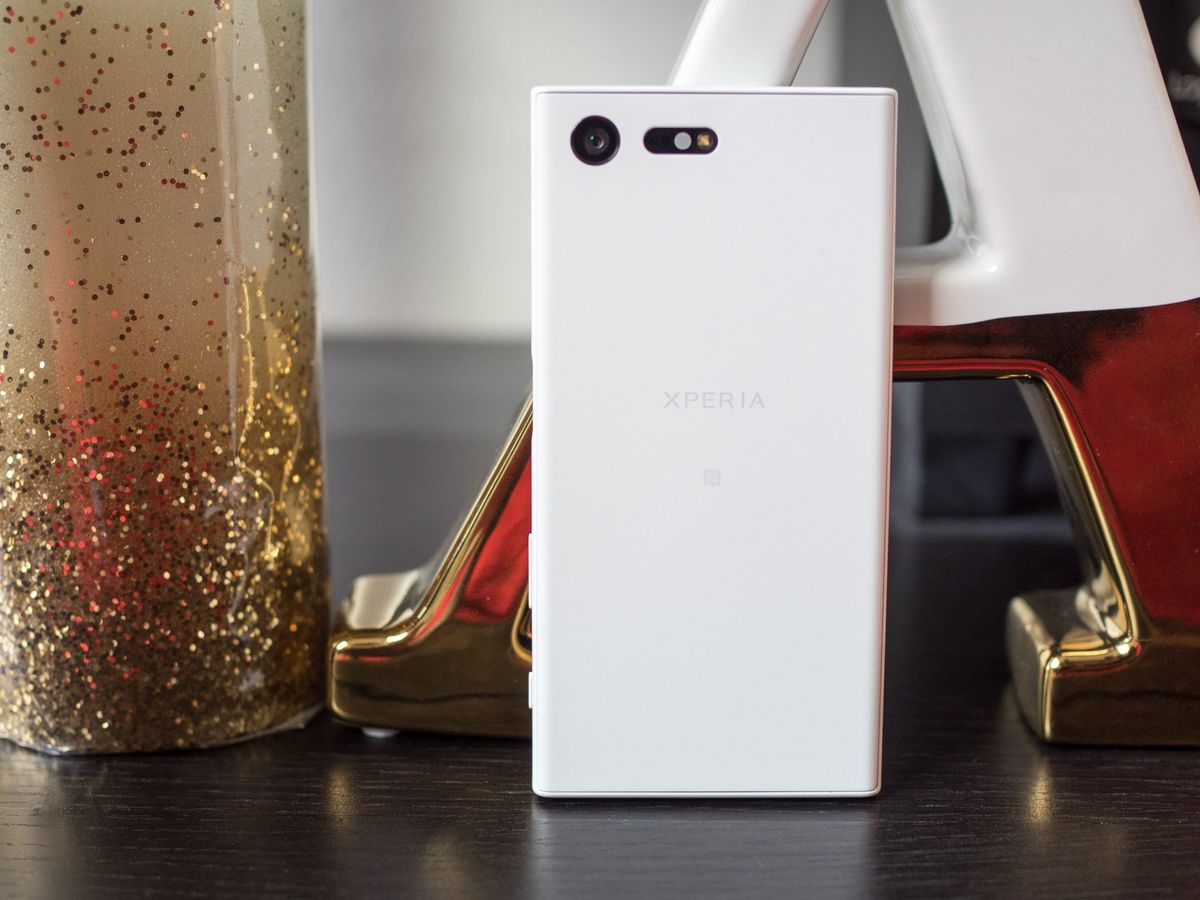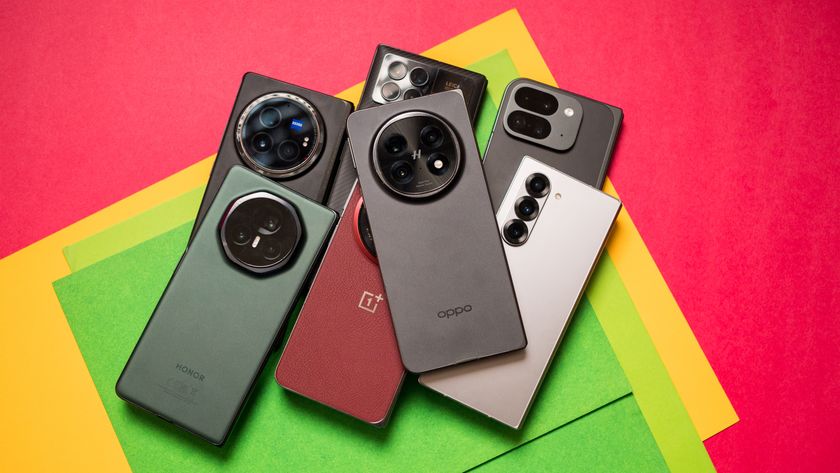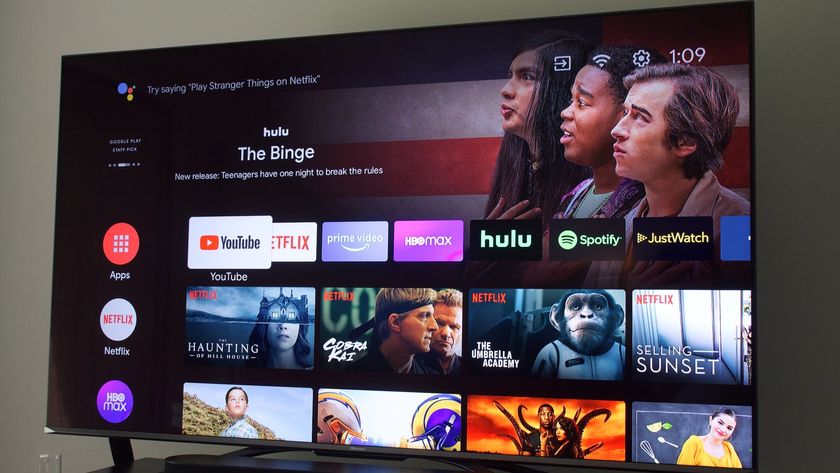The quick take
The Xperia X Compact gives you everything you need in terms of screen, performance, battery life — plus a few nice additions like stereo speakers, a slick software experience and Sony's latest camera technology. But this isn't simply a flagship-level phone in a smaller size: you're getting a plastic phone that's also missing a fingerprint sensor and waterproofing. So for as great as the X Compact is, it sits in an odd area — offering you less than other phones, but still commanding a $499 price. You really have to want a small phone to spend that much on the X Compact.
The Good
- Small, but not cheaply made
- Solid screen, even at 720p
- Great performance and battery life
- Strong camera
The Bad
- No fingerprint sensor
- Plastic may not appeal to everyone
- No Quick Charge charger included
- Expensive for the size
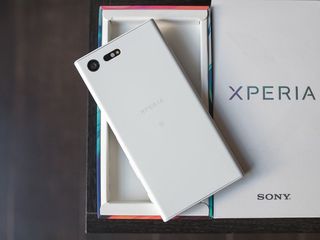
A bit of a throwback
Sony Xperia X Compact Full review
Since roughly 2012, when Android phone screens really started to grow with no sign of stopping, the desire from a vocal group to have a "compact" phone available has strengthened. But not just any small phone, they all want a compact version of a flagship phone; one that doesn't compromise on specs or features in order to fit into a smaller size. This is the holy grail for many.
Sony has been the one manufacturer that consistently offers a range of phone sizes, regularly being the example of how to do this right with its Compact series. The common era of these phones started with the Xperia Z1 Compact, with a small 4.3-inch display. We're now nearly three years past the launch of the Z1 Compact, and we have the Xperia X Compact to carry this tiny torch.
The X Compact has gained a little screen size, now up to 4.6-inches, but it's still working with the same formula. It has nicer components and features than you usually get in a small phone today, with a few standout items like Sony's best available camera setup. At the same time, it sits very awkwardly just underneath the also-compact 5-inch Xperia X, which is moderately larger but with a higher-res screen and now lower price. And this isn't necessarily a full-on flagship phone, either, as it's missing a few high-end features. All while still charging a rather hefty $499.
So many people say they want a compact high-end phone, but few actually end up buying one. Is the Xperia X Compact the one to satisfy that thirst and rack up sales? Read on for our full review.
About this review
I (Andrew Martonik) am writing this review after just shy of a week using an unlocked Xperia X Compact, provided to Android Central for review by Sony. The phone was used on the T-Mobile network in the greater Seattle, WA area. The software was build number 34.1.A.1.198, with the June 1, 2016 security patch, and was not updated over the course of the review.
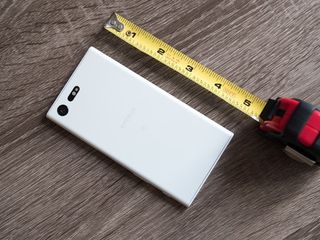
Little wonder
Sony Xperia X Compact Hardware
Ah, small phones. There's just something refreshing about picking up a phone that you can easily cradle in one hand, reaching your thumb from top to bottom and side to side without any hesitation, shifting or fear of dropping the phone. You just don't find phones this small anymore, especially as the budget segment has increased its screen sizes in order to offer even more perceived value for money. In this case, you have to pay more to get less in the Xperia X compact.
While the X Compact is true to its name in overall size, it is a bit larger than the 4.6-inch screen would lead you to believe. As is the case on most of Sony's phones, the X Compact is adorned with rather large bezels, particularly on the top and bottom of the display. The overall size isn't far off from the 5.1-inch Galaxy S7, and is similar to the 4.7-inch iPhone 7, which itself is known for large bezels.





It's okay to dislike plastic, but this is really nice plastic.
Sony has continued its blocky, semi-rounded "loop surface" look from the rest of the Xperia X series, which is immediately distinguishable to phone fans as a Sony design — and I really dig it. Looking at the bottom of the phone you see a cross-section of the design that looks almost identical to the proportions of its USB-C port, with nicely rounded sides coming around to a flat front and back. The back is a single piece of plastic, which feels a bit cheap compared to the metal on the Xperia XZ but matches nicely to the ceramic-like coating around the rest of the phone. (It also means the NFC antenna is on the back, rather than the front, of the phone — I'll take it.)
The phone is a little on the slick side, but the curves are friendly to your hand and the tolerances for the joins between the materials are perfect and worthy of your appreciation. The front glass is sculpted nicely into the edges and has a couple perfect cutouts for the front-facing stereo speakers, while the buttons on the side are easier to press than they look. That recessed home button feels great, but unfortunately doesn't integrate a fingerprint sensor — a head-scratching choice for a phone with a $499 list price.
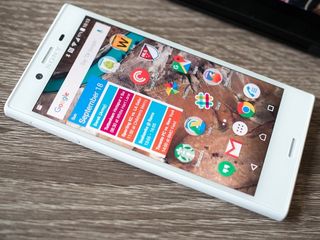
There's an amazing simplicity and quaintness to the look of the X Compact.
Looking at the spec sheet and seeing a 1280x720 display resolution (coming in at 319 ppi) immediately makes you check to see what year it is, as even low-end phones now ship with 1080p panels, but naturally those numbers don't tell the whole story. Sony has packed a phenomenal display in the X Compact — it's fantastically laminated to the glass, has great viewing angles and superb color reproduction. I never touched the display settings, choosing to leave it at the default "X-Reality for mobile" mode. Though I confess I can see the slightly rough lines on some things, I never felt it detracted from the experience of using the phone. And as I'll get to later, that lower resolution certainly helps in terms of performance and battery life.
More: Complete Xperia X Compact specs
This is decidedly not a screen for those who want to watch video on their phone more than occasionally, and you don't really realize it until you're holding up the X Compact watching YouTube. For some, that's not an issue — but if you're one to watch an episode of your favorite show on your lunch break or jump into Netflix while you're waiting for a train, the X Compact isn't likely to meet your needs.
But if you don't crave a huge screen for consuming media, there's an amazing simplicity and quaintness to the look of the Xperia X Compact, even in white as I have here but particularly in the black color that's also available. It's a simple, pure design without additional flourishes that get in the way, and that's particularly important for a small phone that just doesn't have the extra real estate for shocking design elements. There's something nice and refreshing about holding a small phone that isn't trying to act like it's a massive supercomputer.
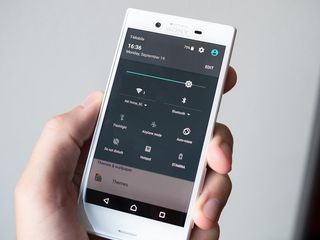
Sony keeps it simple
Sony Xperia X Compact Software
Sony can call the likes of Moto and OnePlus company when it comes to offering clean, simple and fast software. What you're greeted by on the Xperia X Compact is not unlike a Nexus phone running Android 6.0 Marshmallow, with a few subtle changes to iconography and of course the default apps. Perhaps the biggest visual change comes with the launcher and lock screen, which I quite enjoy — and importantly, none of the changes detract from or alter the core Android experience.
I picked up the X Compact and installed my typical Google Now Launcher and Google Keyboard combination, and didn't touch a single thing in the software thereafter. Everything works as I expect it to, and it didn't take a bunch of tweaking or configuration to do so. Sony still includes a handful of pre-installed apps that I didn't really care to use, but most of them can be disabled and the group is nowhere near the size I see in the app drawer on Samsung phones. Sony's styling of the dialer, photo gallery and other apps feel very native to the platform as well, keeping a consistent look and feel across the phone.
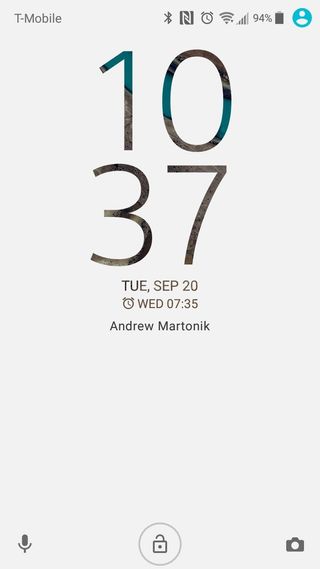
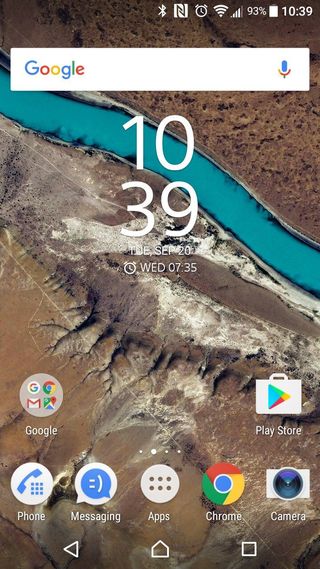
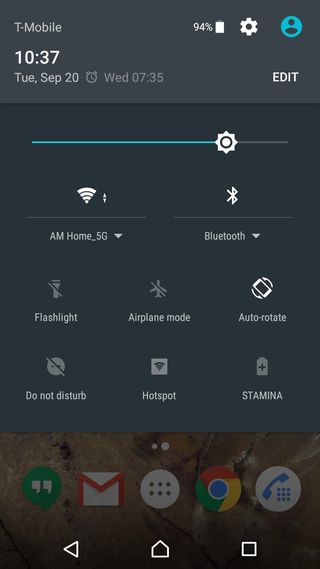
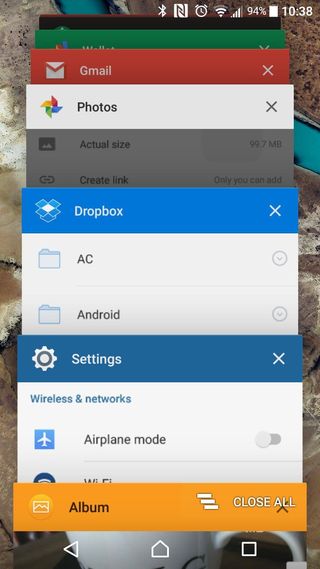
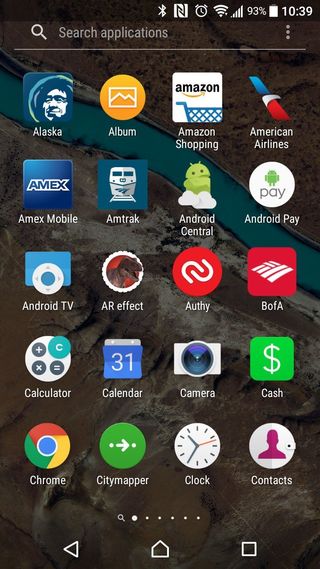
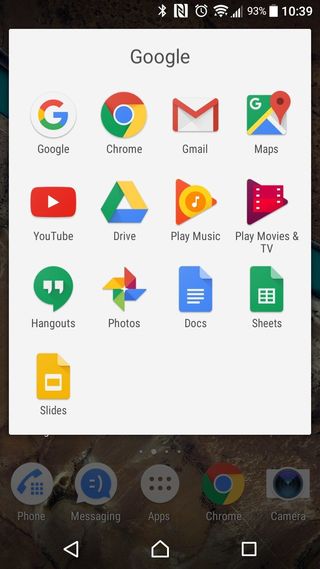
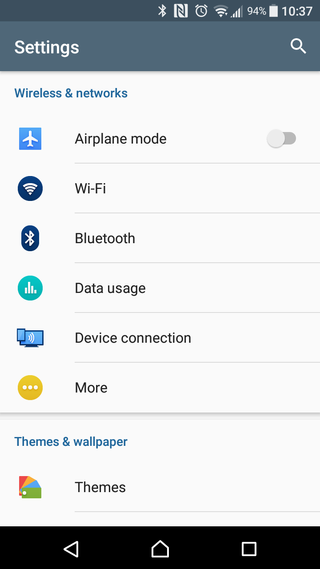
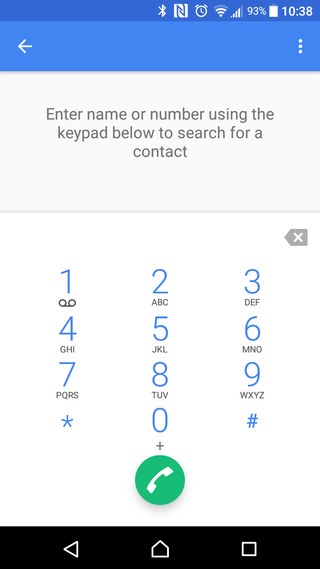
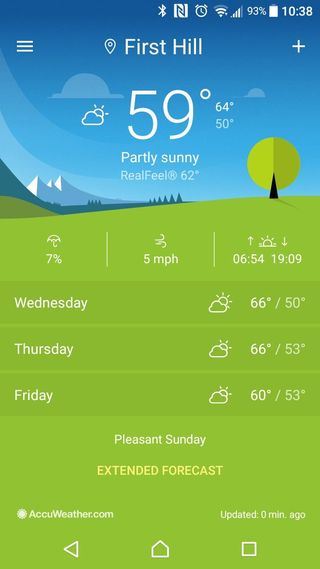
In a very nice departure from the past two Sony phones I used, the Xperia X Performance and Xperia XZ, the X Compact is ridiculously fast. Whereas those two phones were mostly quick but still chugged along slowly at times, the X Compact hasn't had a single slowdown or even as much as a stutter in a week of my typical use.
Of course this isn't that surprising considering the very capable Snapdragon 650 processor and 3GB of RAM pushing just a 720p display, but as I noted above this kind of performance isn't always a given on recent Sony phones. The X Compact performs just as well as any other high-end phone you've used recently with a late-model Snapdragon processor, and I wasn't able to do anything that made it slow down. This is what you expect to get for this kind of money, and the X Compact absolutely delivers.
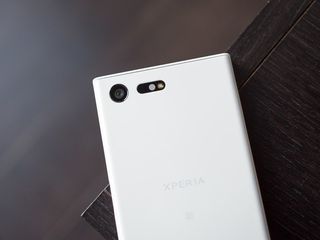
Getting there
Sony Xperia X Compact Cameras
Sony's tried-and-true 23MP Exmor RS sensor is once again the core of the Sony camera experience on the X Compact, but like the Xperia XZ it was announced alongside we actually have something to get excited about here: new 5-axis image stabilization. Sony seemed pained to add OIS (optical image stabilization) to its cameras up to this point, and I'm glad it finally made the jump.
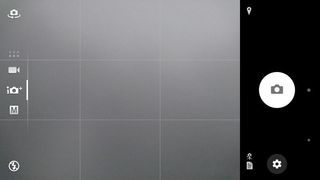
Sony's camera interface is simple enough, though its "Superior Auto" isn't all that superior anymore and still requires hopping over to Manual in order to toggle HDR or tweak even the simplest things. This wouldn't be a problem if its Auto mode were truly "superior." The X Compact's overall software performance has extended to the camera, thankfully, and is amazingly quick to open, capture and process photos — considerably faster, in fact, than the Xperia XZ and X Performance. Puzzling.
The camera shoots 8MP downsampled (4:3 or 16:9, your choice) photos by default, mostly for file size reasons, but you can quickly jump up to 23MP full-res photos if you'd like. Unless you plan on cropping in after the fact I recommend just leaving the camera to its default 8MP resolution, which saves you storage space and a little bit of processing time.











The camera is no longer a clear weak spot, but it's squarely average.
Photos are incredibly sharp, even when you zoom in to pixel peep a bit, and the colors tend to be accurate rather than over-saturated like some phones (though the look is a personal preference). When shooting in Superior Auto and using tap-to-focus the camera tended to over-expose photos and wash them out, leading me far too often to hop into Manual and just use HDR for a more balanced shot.
For low-light photos, the 5-axis stabilization is clearly in play to help the X Compact take solid and much improved, but just average photos. In dimly lit rooms it tended to go with longer-than-necessary shutter speeds (sometimes up to 1/8 second), often introducing blur, and still couldn't take crisp well-balanced photos like you get from other cameras. Low-light photos sometimes took a couple of attempts, which was a departure from the "point, click, review awesome photo" experience of daytime shots.
I'm impressed by the Xperia X Compact's camera in terms of stepping up its game considerably from Sony's previous phones. As I mentioned in my musings about the Xperia XZ, Sony's new camera setup is firmly in the "good" camp, still a few steps behind the "great" arena where Samsung plays. The camera is no longer a main downside or deal breaker here, and that's a great thing — it just isn't so great that it'll sell phones all on its own.
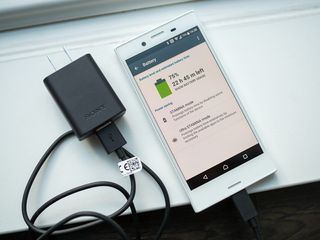
All day, every day
Sony Xperia X Compact Battery life
Any time you see a spec sheet that lists less than a 3000 mAh battery in a modern phone, you get a little worried about longevity. With 2700 mAh under the hood in the X Compact — a full 200 mAh less than the Xperia XZ, which itself didn't have stellar battery life — the X Compact has been a battery champion, though. The combination of just a 720p screen and a lower-powered Snapdragon 650 processor meant I never thought out battery life on the X Compact.
A battery that lasts all day, every single day.
My typical day out of the house, with three hours of "screen on" time, using LTE, keeping up with notifications, social networking, photography and listening to podcasts I would end the day with at least 25% battery left. On a lighter weekend day where the phone spent good chunks of time on a table or in my pocket, I would end the day with well over 50% battery. Unlike the Xperia XZ, I never had to enable Stamina Mode to extend the battery — in fact, I never once touched the 10% battery level on the X Compact.
For charging back up, the X Compact supports Quick Charge 3.0, letting you quickly replenish that 2700 mAh battery. The charger that ships in the box is a standard non-Quick Charge 5V/1.5A wall plug, though, which is a bit odd. Because battery life has been so great for me on the X Compact I'm not so worried about the charging times of the relatively small battery, but considering the price you're paying for this phone I would've expected a Quick Charge charger in the box with a phone that supports the tech.
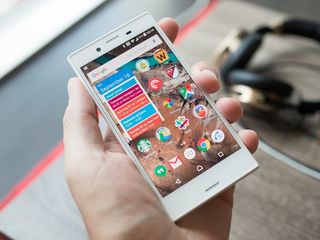
Little wonder
Sony Xperia X Compact Bottom line
Going into reviewing the Xperia X Compact, I was excited to use a "small" phone again primarily from the perspective of nostalgia; watching phones get bigger and bigger, I just wanted something more compact that didn't make compromises in experience. Over a week using it, my view shifted entirely to real, legitimate enjoyment of this phone based on its merits. It's amazingly quick with fantastic battery life, has a great screen, is built very well and has a solid camera. There are even a few extra perks like stereo speakers, 32GB base storage with an SD card slot, and Quick Charge 3.0 support.
The Xperia X Compact is great for fans of small phones.
Though I have a strong desire to just recommend the Xperia X Compact outright, I have some trepidation simply because the phone isn't all roses. It commands a high price, yet lacks waterproofing, a fingerprint sensor and metal construction found in the (admittedly larger) competition; it also has a smaller, lower-resolution screen, as well as a technically slower processor and "just" 3GB of RAM. So it's missing a few line items and features that keep it from truly being a "flagship in a smaller size" — it is instead a smaller phone that does indeed have shortcomings.
At a retail price of $499, the X Compact costs $100 more than bigger, more powerful phones with more features like the OnePlus 3 and Honor 8; and at the same time is just $50-100 less than the Galaxy S7 (thanks to recent price drops), which is a better all-around phone. With these market realities, you're faced with having to justify paying more money for physically less phone — that's hard for some people to get over.
The Xperia X Compact is all about the whole package rather than simply chasing line items — though it does have most of what people are looking for in a high-end phone today. It's for those who want a smaller phone with a well-executed design, but don't want to give up on the performance, battery life, camera or base level features they've grown accustomed to in other expensive offerings. And you're going to pay a bit extra for the privilege. Those who simply look at their phone buying decision as "getting the most features and size for my money" won't see value here. But if you're immediately drawn to the smaller size of the Xperia X Compact, you'll get a fantastic phone.
Andrew was an Executive Editor, U.S. at Android Central between 2012 and 2020.
